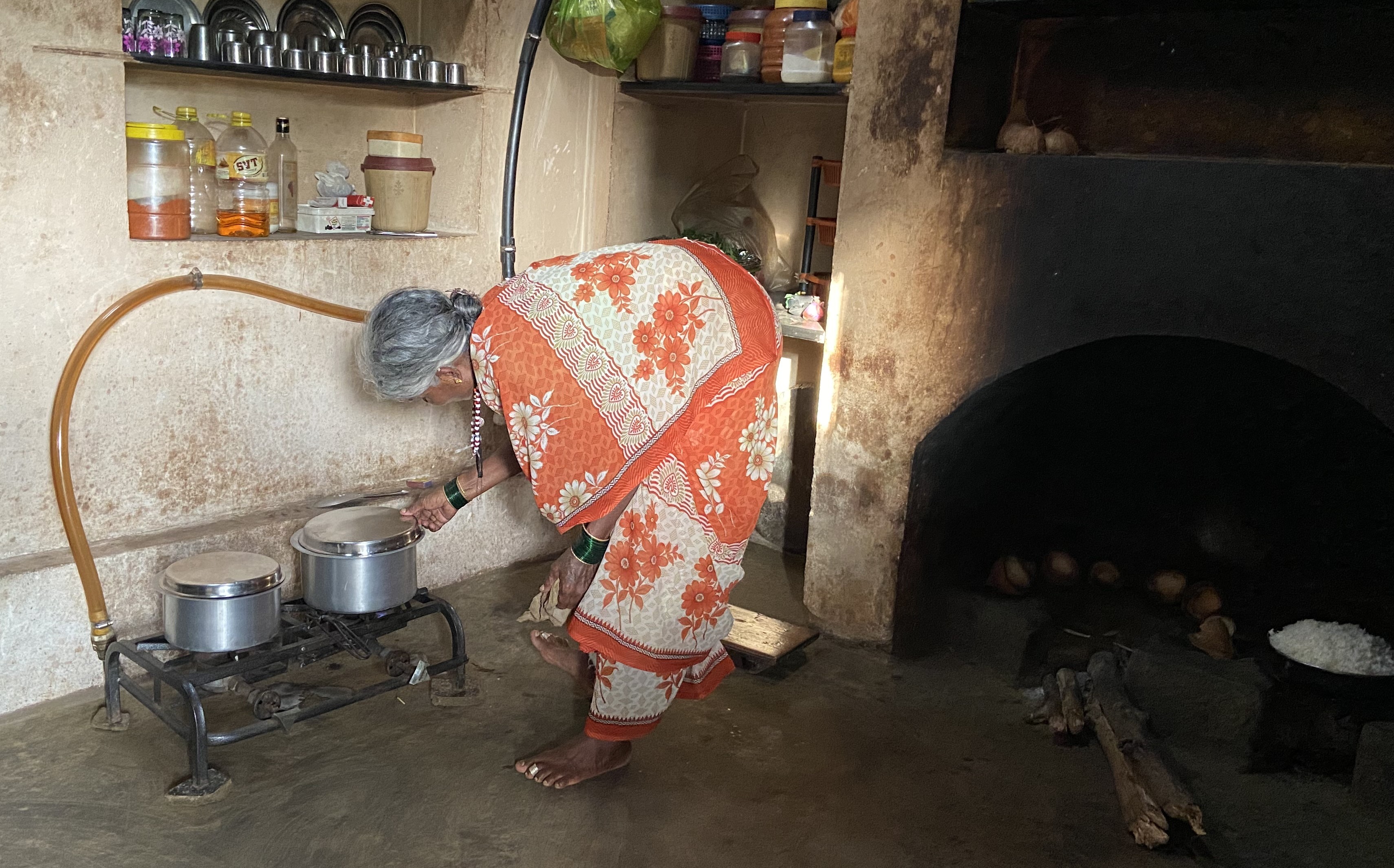Background
According to the National Sample Survey, 47% of rural households in India were using firewood as their primary source of cooking. Even though cleaner fuels like LPG are available, they are largely inaccessible to the people at the margins due to a centralized distribution system. It is also a fossil fuel, of which extraction and usage leads to much higher emissions. Communities in rural areas practice animal husbandry which produces large quantities of animal waste, usually, the waste is dumped at a place and is cleared only once a year. Animal waste has a high methane content, all this methane is released directly into the atmosphere increasing the amount of carbon present in the atmosphere.

High Costs of Cooking Fuel
Rural communities spend a major portion of their time in the collection of firewood losing out on time for labour that can generate income for them. The use of LPG involves transportation which substantially increases the cost of the fuel. These communities need cleaner fuel that can be sourced locally. An already existing resource in the form of animal waste can make this possible through bio-digesters.

Problem Statement Effects of Climate
Collection of firewood for cooking involves a lot of drudgery, due to heat stress the process becomes much more difficult. While burning of firewood itself releases a lot of carbon into the atmosphere.
Solution
A bio-digester is a device that uses microorganisms to break down organic waste into biogas and fertilizer. It is an eco-friendly solution for managing organic waste, especially in rural areas. Bio-digesters are typically made up of an airtight container that holds the organic waste, a gas collection system, and a gas storage system.
Impact
1. Reduction in the fuel and transportation cost by producing the fuel at source.
2. Availability of cleaner fuel for cooking provides a healthy and toxin-free indoor environment avoiding healthcare issues.
3. The slurry is used to make compost which increases farm productivity and reduces the input costs. It can be sold in markets generating a secondary income of 5,000 to 8,000 Rs per month.
Building Climate Resilience
Mitigation
It eliminates emissions from burning firewood, transportation of LPG and methane release from animal waste. The slurry provides a substitute for synthetic fertilizers which pollute the soil and the water bodies.
Adaptation
It reduces drudgery and heat stress caused during the collection of firewood. The slurry from the bio-digester can be used as manure which increases the organic content present in soil making it more fertile.
